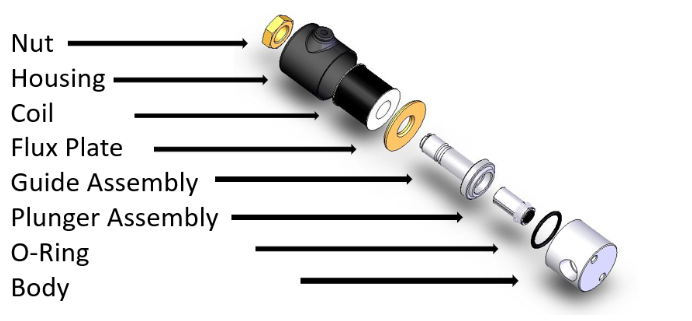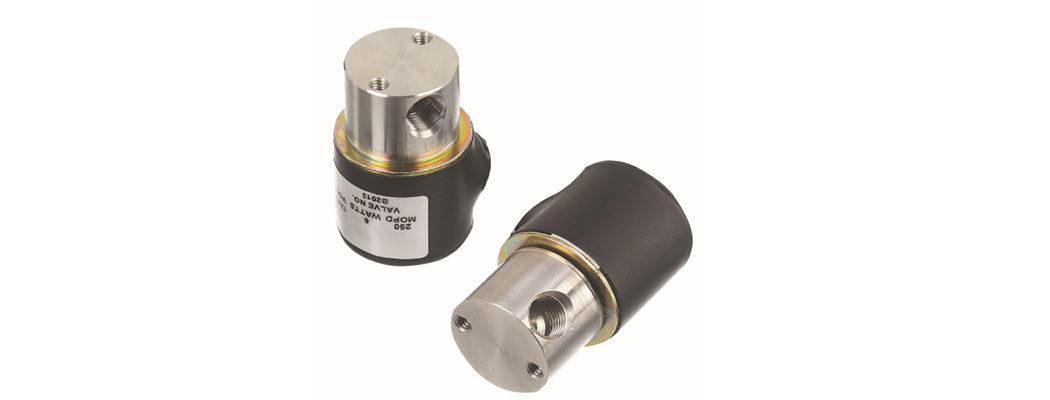The below diagram shows the different components that make up a Solenoid Valve.

Nut: Holds the coil onto the valve and threads over the stop piece of the guide tube assembly.
Housing: Metal plate that covers the coil and helps complete the magnetic circuit created by the coil when energized.
Coil: Element of the valve that when energized creates a magnetic field. Comprised of copper magnet wire spooled around a bobbin.
Flux Plate: Metal plate that helps complete the magnetic circuit with the housing.
Guide Assembly: Metal tube that internally houses the plunger, and acts as the external mounting post for the coil. The magnetic stop piece is welded to the top and the flange is welded to the bottom.
Plunger Assembly: Magnetic plunger that is typically 430FR SS, including the plunger seal and spring.
O-Ring: Seal material that prevents the fluid from leaking external to the valve. This seals the guide tube flange to the valve body.
Body: The portion of the valve that has the plumbing connections and also the seat for the plunger to seal on.
Click HERE to view the full range of Solenoid valves
 SEARCH OUR RESOURCE CENTER
SEARCH OUR RESOURCE CENTER

